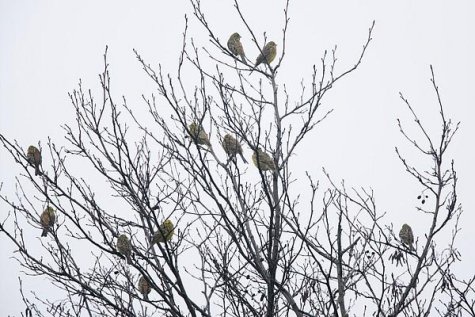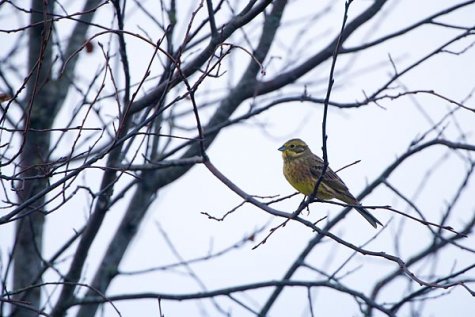About yellowhammers in winter
Photos: Arne Ader
Translation: Liis
Yellowhammers
Yellowhammer Talvike Emberiza citrinella
In severe winters we have relatively few yellowhammers; this winter and the scarcity of snow suits them. They move around in groups, sometimes in quite large flocks. We notice the winter groups at roadsides or sitting on power lines. They look for weed seeds in hayfields and in the search for food they tour fields and thickets. In daytime they visit the forest camera feeding ground together with tree sparrows. In communities they also visit birdfeeders but there they mainly feed on seeds spilled on the ground or intentionally scattered there. Yellowhammer movements might seem clumsy to an onlooker. To their comrades of the same species they behave peacefully; they trust people and they can be quietly approached to a few meters distance. The numbers may at the moment be estimated at a couple of hundred thousand birds.
A yellowhammer, with a small beak and relatively long tail, is about 15 centimetres long, weight about 30 grams, so a little larger than tree sparrows.
The plumage colour of yellowhammers can be quite different. The back plumage and wing feathers are banded in brown and black and on the breast too we can see darker bands. A certain identification mark is the rust-coloured rump area.
The male bird’s head is noticeably yellow, the female more modest with duller plumage but with clearer lengthwise streaks. The more days approach spring, the more ”golden” the plumage of the yellowhammer turns.
Yellowhammer observations: LINK
Yellowhammer










